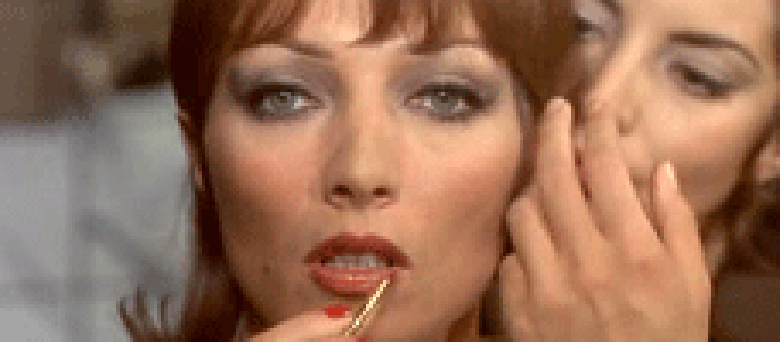Reviews
Bad Girls
Claude Chabrol
France, 1968
Credits
Review by Sammy Wasson
Posted on 26 January 2010
Source Pathfinder DVD
I’ve always had a thing for Claude Chabrol. Godard never hits my sweet spot and Truffaut, with few exceptions, hits it too hard. But Chabrol, mercurial, clever Chabrol, always knows what I want. True, he may choose not to give it, he may delay or even withhold satisfaction, but our pleasure is always in his crosshairs, and Chabrol feathers it like a giggling coquette. Better than that, when he’s in a playfully sadistic mood, he may not feather at all. But he’s still laughing. Mercurial Chabrol almost always is.
Like Hitchcock, one of his masters, Chabrol gets a big kick out of perversity. But unlike Hitch, Chabrol’s sense of a humor never sinks to sea level. He’s too damn French for that; Shakespeare would have him somewhere between Lady Macbeth and Falstaff. Think of Les biches, which Chabrol called “the first film which I made exactly as I wished.” It begins full of delicious ennui (bien sur) as Frederique, a beautiful, wealthy Parisian (played by Chabrol’s wife and frequent collaborator, Stephane Audran), picks up a sidewalk artist called “Why” (Jacqueline Sassard), brings her to her posh apartment, watches her bathe, and after some highly suggestive cross-cutting on the part of Chabrol, drops to her knees to drink in Why’s glistening midriff. Well, by now we can hardly stand it. (Come on, Chabrol! Give it to us!) Slowly, so as not to disturb the thick air of languor our director has painstakingly cultivated, Frederique raises her spindly fingers to the button on Why’s jeans, and Chabrol slams us with a hard cut to another place and time. The foreplay has begun.
Into their idyll comes Paul (Jean-Louis Trintignant) to lure Why from Frederique. Together, the three of them circle onward toward a ménage, but no one seems to be having any fun; we soon see this is a game of possession, not sex, and certainly not love. Indeed their every interaction is handled with a sensuality so joyless, if it wasn’t for Chabrol’s cinematic wit, you might think you were watching Antonioni. Throughout the picture, Audran keeps her face as still as lake. When she moves or speaks, it’s practically without intention. At times, like a person out of Pinter, she barely seems to play the part. And yet, it comes off.
With looks as blank as these, it falls to Chabrol to make sense of them for us. He becomes, in a sense, a kind of translator, and uses his camera to reveal the quiet violence coursing beneath the façade. To pull it off, Chabrol could, like Hitchcock, dutch the angle (as in I, Confess), or subsume us in point of view (Rear Window), or try out terrific tricks (Vertigo), but - surprise, surprise - he’s too damn French for that. Instead, Chabrol casts a cool, objective lens on his characters’ dysfunction. But rather than distance us from them, his remove invites us to push past the surfaces and wonder at what sickness churns on the other side of their eyes. Suddenly, the hairline fractures come into view. Then the cracks. Things begin to break.
Enough hours with Chabrol, and one can see the fissures coming a long way off, but no matter; when his mysteries falter, or when his suspense lags, there is more than enough psychological disintegration to keep us going. Can’t see it on the faces? Then look to the camera. By the end of Les biches, flat, deadening two-shots - the shallow-focus kind that Buñuel loved - give way to cubism. With whirling elegance, Chabrol juliennes the action; small pushes-in, gentle tracks-out, and layered compositions lend the narrative its multidimensionality, and enhance our understanding of these people’s inner lives. It keeps Les biches from drooling into hysterics and flamboyant clichés, and it allows Chabrol’s two opposing loves - refinery and brutality - to exist side by perverse side.
We don’t do comments anymore, but you may contact us here or find us on Twitter or Facebook.



